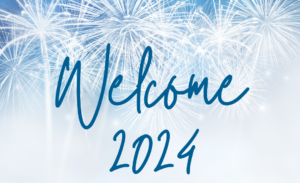Contact: an acquaintance, colleague, or relative through whom a person can gain access to information, favors, influential people and the like.
Relationship: the way in which two or more people or groups behave towards and are involved with each other.
Amassing a vast amount of contacts is one thing.
Staying in touch and growing contacts into relationships is quite another.
I’ve always been in awe of people who do both. The people who seem to effortlessly network, meet new people and expand their circle. But they also reach out with interesting links, make introductions, invite me to events and remember I prefer olives to chocolate and dancing the mambo.
Yes. I’d like to be like more like those people.
It only took one exasperating exercise consolidating and scrubbing multiple Excel, LinkedIn, MailChimp and hand-scribbled “people-I-need-to-keep-up-with lists” to realize:
My current system sucks.
I learned I have no discipline around capturing, categorizing or following up with my contacts. How could I possibly nurture and more fully develop my network if people were constantly falling through the cracks?
So I asked a few people who are really good at cultivating relationships what they do.
1. Capture.
After that first exchange or introduction, immediately capture the person somewhere. It might be connecting through LinkedIn or adding their information to a spreadsheet or writing their name in the back of a notebook (not advised, trust me). The key is finding an easy and fast way to remember who you meet.
As your network grows, it becomes harder to remember who’s who. Save yourself a headache down the road by noting something personal about each contact. Find a memory trigger such as who introduced you, how you met, a sport they coach, an instrument they play, etc.
2. Send an Initial Ping.
Right away, follow up with a personalized message which includes:
- it was nice meeting you
- how you can help them (e.g. here’s a link to that event I mentioned)
- something personal you learned about them (e.g. good luck in the chili cook off next week)
In his book, Never Eat Alone, Keith Ferrazzi calls these quick casual greetings “pings”. Pings are an important way to stay in touch with people, and also show that you value the relationship.
3. Categorize and Prioritize.
Not all relationships require the same type of interaction or frequency of pings. With some you will want to reach out a few times a year, for others once a year might be enough. Making lists and tracking your interactions will keep you organized.
David Hampe, Founder of C-2-C Media, categorizes his contacts by geography and relationship (e.g. FFL = friend for life, PART = business partner). He constantly refreshes his list so he knows exactly when the last interaction took place. “If I go to a city on business, I look at my master list and know who I have seen in the past year,” says Hampe. “I know who I need to reach out to and who can wait until the next time I’m in town.”
4. Be Helpful. Be Generous.
It’s nice to check in but much more helpful to offer something that serves or enhances the other person’s job, network or interests. It only takes a few minutes to send articles, suggested reading, information on an event, or an introduction the person might find useful.
Sean McGinnis, Founder of 312 Digital, targets his interactions on the person’s interests. “For me, the most important thing is to focus on them, and to try to add value with each interaction. It’s not just a ‘hey how’s it going’ interaction – rather it’s a ‘hey, I found something I thought you’d be interested in’ interaction. Real relationships are built on value.”
One of the most generous gifts to give are introductions. “I love introducing new connections to potential partners, clients and associates” says Wendy Widom, President, Families in the Loop. “When they go off and do great things together, it feels great.”
Social media has made it much easier to ping with purpose and connect people to each other. Commenting on an author’s blog, engaging on LinkedIn, tagging on Facebook and retweeting in Twitter shows you have a genuine interest in your network. Tim McDonald, Community Manager at HuffPost Live, uses Rapportive to see where his new contacts are most active. Depending on the social network, McDonald can “put people in lists or groups as appropriate, which makes it easier to track updates, comment and engage with them.”
5. Make time for personal interactions.
It is easy to rely on digital interactions, but relationships flourish when we spend time face-to-face.
Mark Babbitt, CEO and Founder, YouTern, believes to move past the introductory digital nature of most new connections, we must “deliberately seek out personal human relationships via Skype, G+ Hangouts and face-to-face meetings. The more we grow accustomed to social media and speaking in 140 characters and a single post at a time, the more we seem to settle for ONLY that.”
Our networks span geographies so “travel is a great excuse to reconnect,” suggests Mari Luangrath, CEO and Founder, Foiled Inc. “I send an email, text, Facebook message, or tweet my contacts whenever I know I’ll be in town. I book that date/time exclusively for them, turn off my phone and make sure we have 30-60 minutes to catch up.”
There are no short cuts for turning contacts into mutually beneficial relationships. It requires discipline, time and a few processes to stay organized.
But most of all, it means making the other person the priority, not you. “When people sense you’re in touch with them solely for your own needs,” says Widom, “it’s a big turn off. I always recommend taking a real interest in others. It will take you far.”
Marta Steele is a Partner and Community Manager at PeopleResults. Connect with her on Twitter @MartaSteele or through email at msteele@www.people-results.com.



